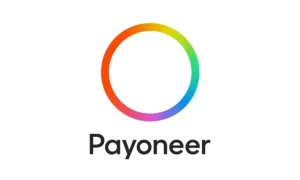Japan’s ispace, US’s Firefly launch moon landers aboard SpaceX rocket from Florida
Two moon landers; Japan’s ispace and US-based Firefly Aerospace, successfully lifted off from Florida aboard a SpaceX rocket, marking a significant moment in the escalating global race to explore the lunar surface.
ispace’s Hakuto-R Mission 2 is making its second attempt to land on the moon after a previous mission in April 2023 ended in failure due to an altitude miscalculation. Meanwhile, Firefly’s Blue Ghost marks its inaugural moon mission, making it the third company to launch a lander under NASA’s Commercial Lunar Payload Services (CLPS) program.
“This ‘rideshare’ launch with Firefly symbolizes the growing trend of commercial missions to the moon,” ispace CEO Takeshi Hakamada stated during a public event in Tokyo.
The lunar landscape has become a focal point for both national and commercial interests, reminiscent of the Cold War-era space race. Countries and private companies are increasingly drawn to the moon for its potential to host astronaut bases and resources for in-space applications.
ispace’s lander, named Resilience, is carrying approximately $16 million worth of customer missions, including a “Micro Rover” designed to deploy and collect lunar samples. The touchdown is anticipated four to five months post-launch, targeting May or June. Resilience will follow an energy-efficient flight path utilizing Earth and moon gravity to navigate through a series of flybys.
Firefly’s Blue Ghost aims to land on the moon within 45 days of launch, targeting March 2. This lander will carry ten payloads, including contributions from NASA-funded customers and Blue Origin-owned Honeybee Robotics.
Both missions are set to last a full lunar day, roughly two weeks, but will not endure the extreme cold of the lunar night, where temperatures can drop to around minus 200 degrees Fahrenheit (minus 128 degrees Celsius).
NASA is eyeing a return to the moon with its Artemis program, aiming to send humans back by 2027, though this timeline may shift. Meanwhile, China plans to have its crews on the lunar surface by 2030, following a series of robotic missions.
The CLPS missions, like Firefly’s Blue Ghost, are designed to study the moon’s surface and pave the way for increased private lunar exploration before NASA’s human missions using SpaceX’s Starship and Blue Origin’s Blue Moon lander.
However, the incoming administration of Donald Trump may bring changes to the Artemis program, with a potential shift in focus towards Mars, in line with SpaceX CEO Elon Musk’s vision. Nicky Fox, head of NASA’s science mission directorate, emphasized the agency’s commitment to lunar exploration despite these uncertainties, stating, “We’ve invested in going to the moon, and I think everybody wants us to go back to the moon.”
Read more
For the latest news, follow us on Twitter @Aaj_Urdu. We are also on Facebook, Instagram and YouTube.





















Comments are closed on this story.